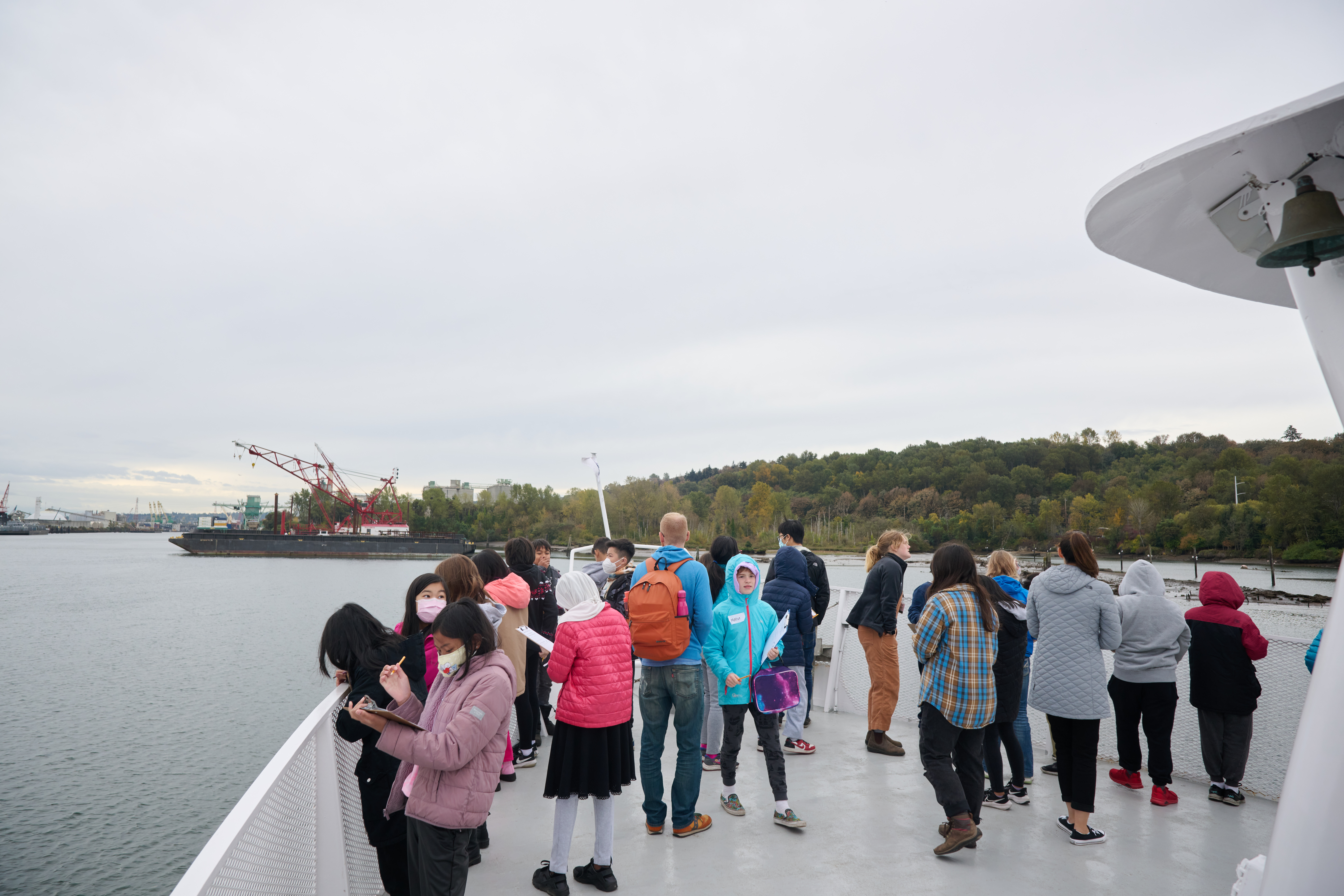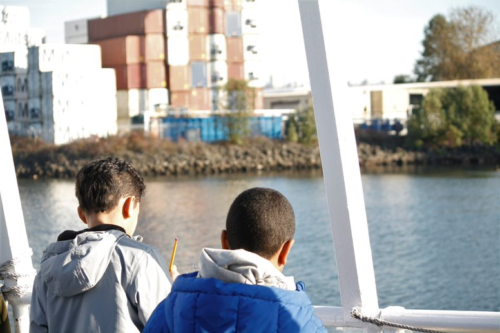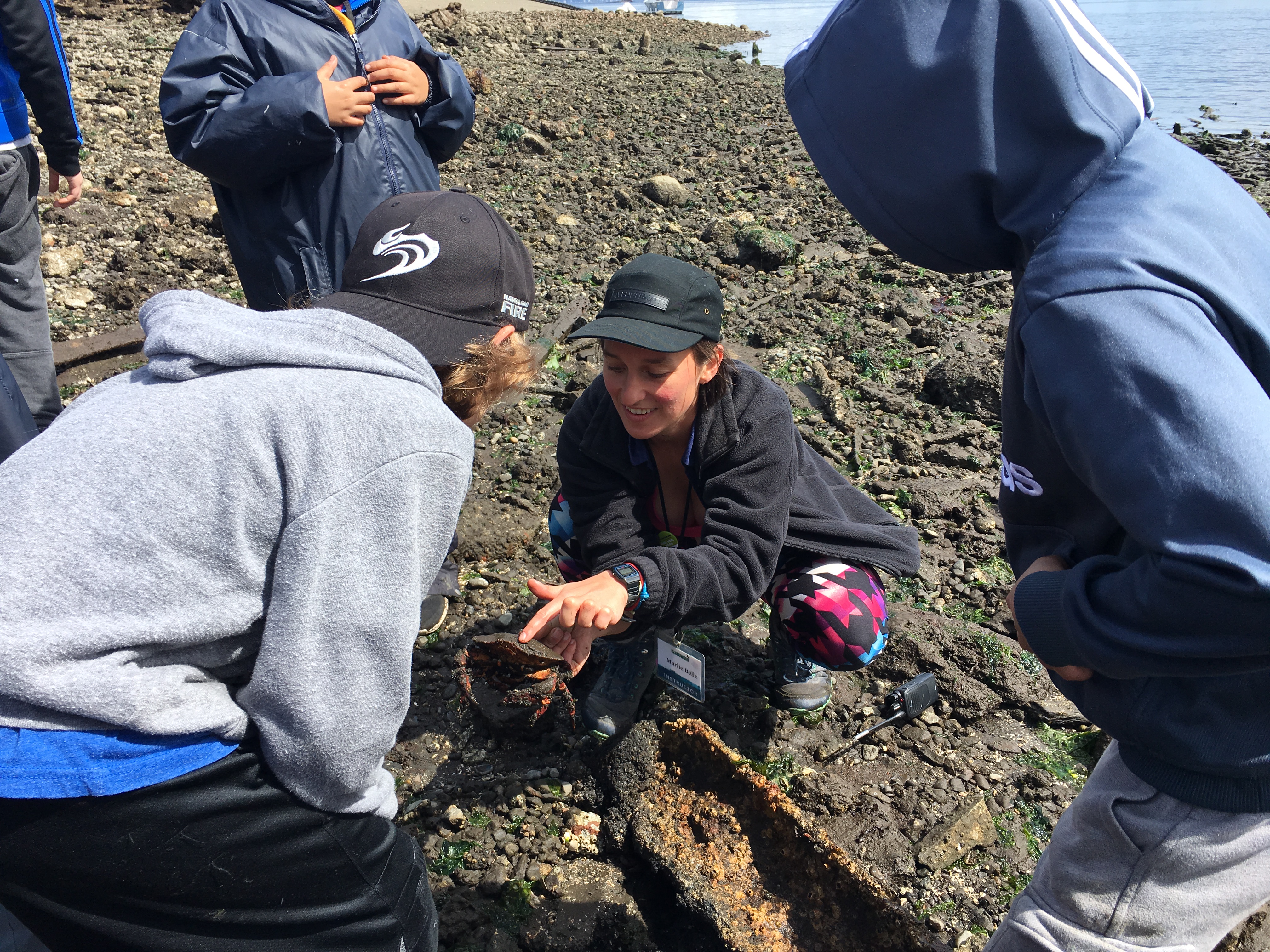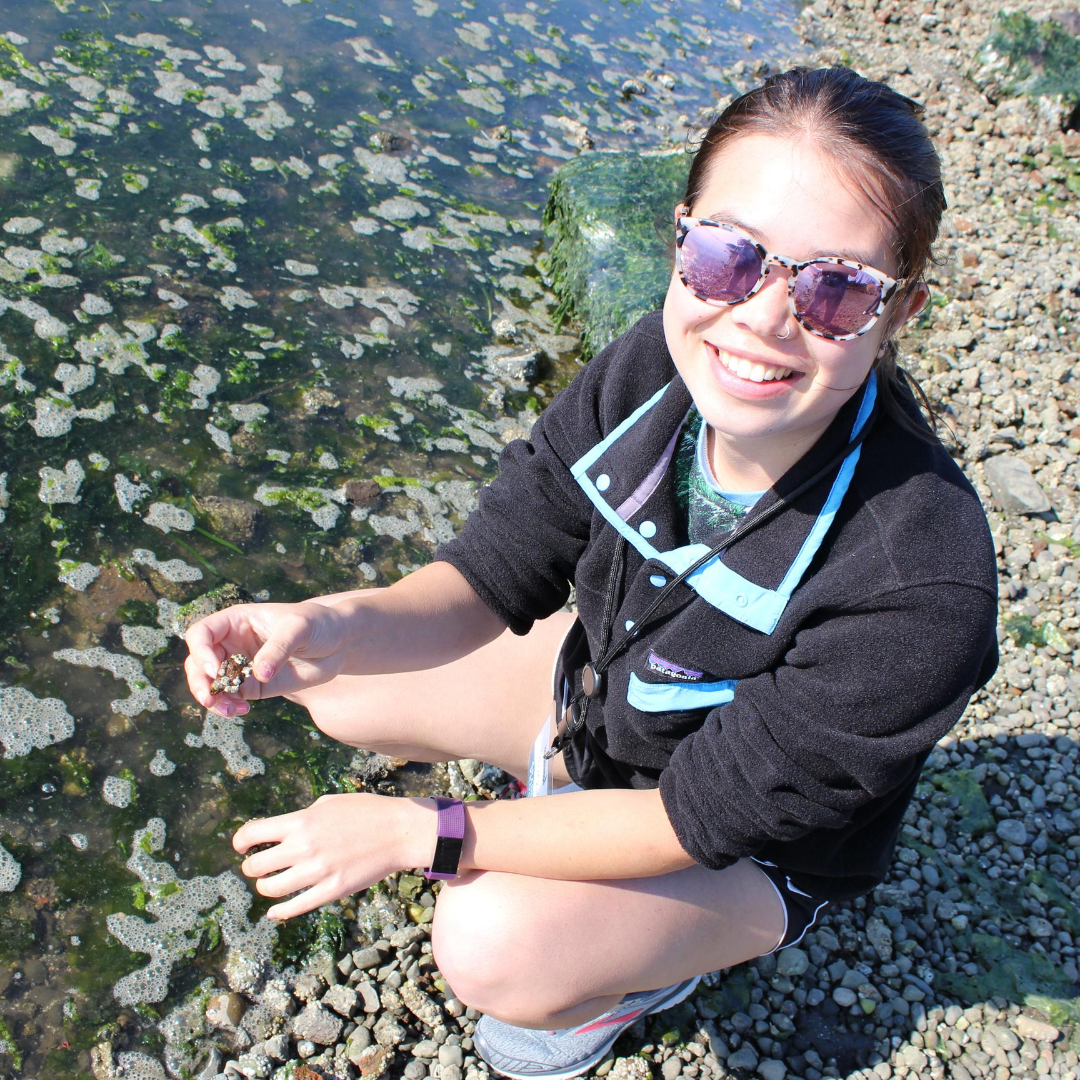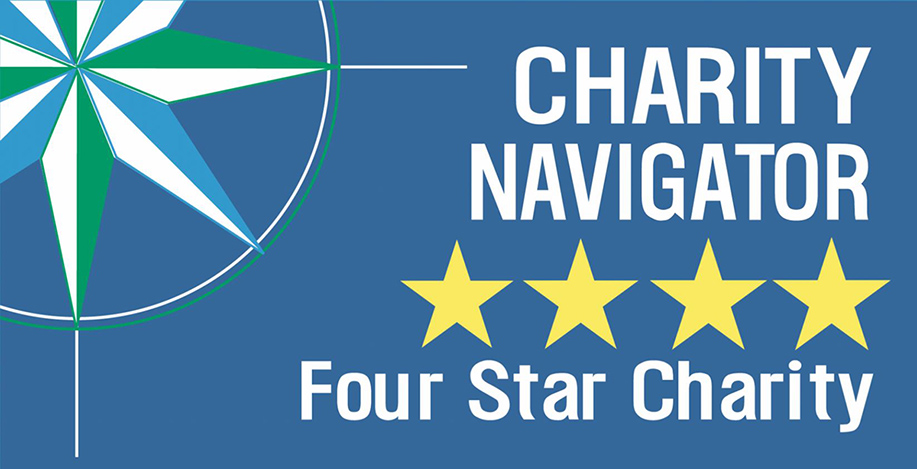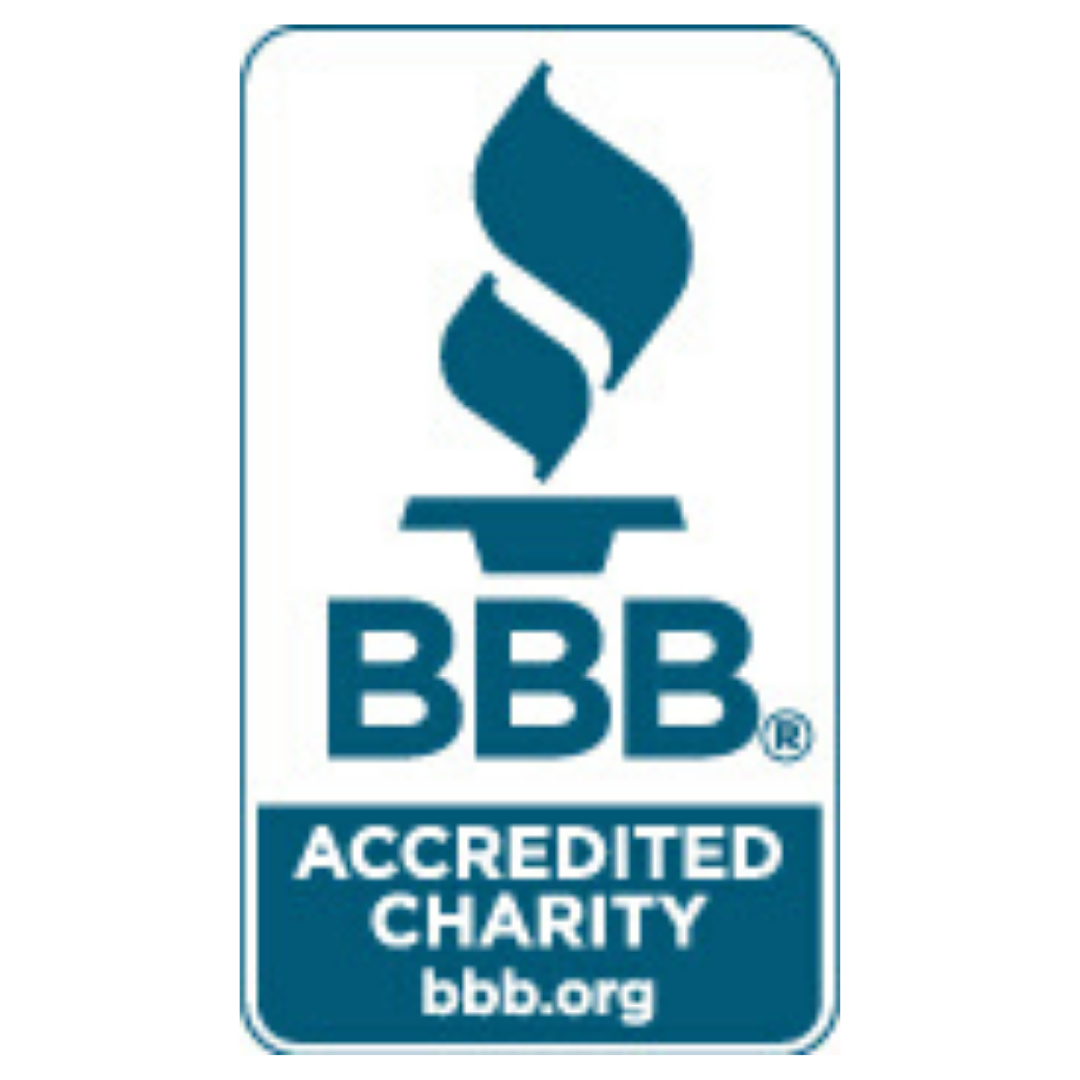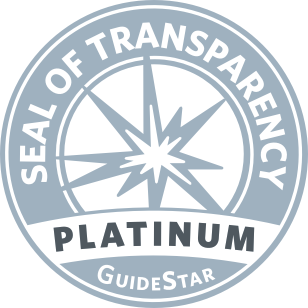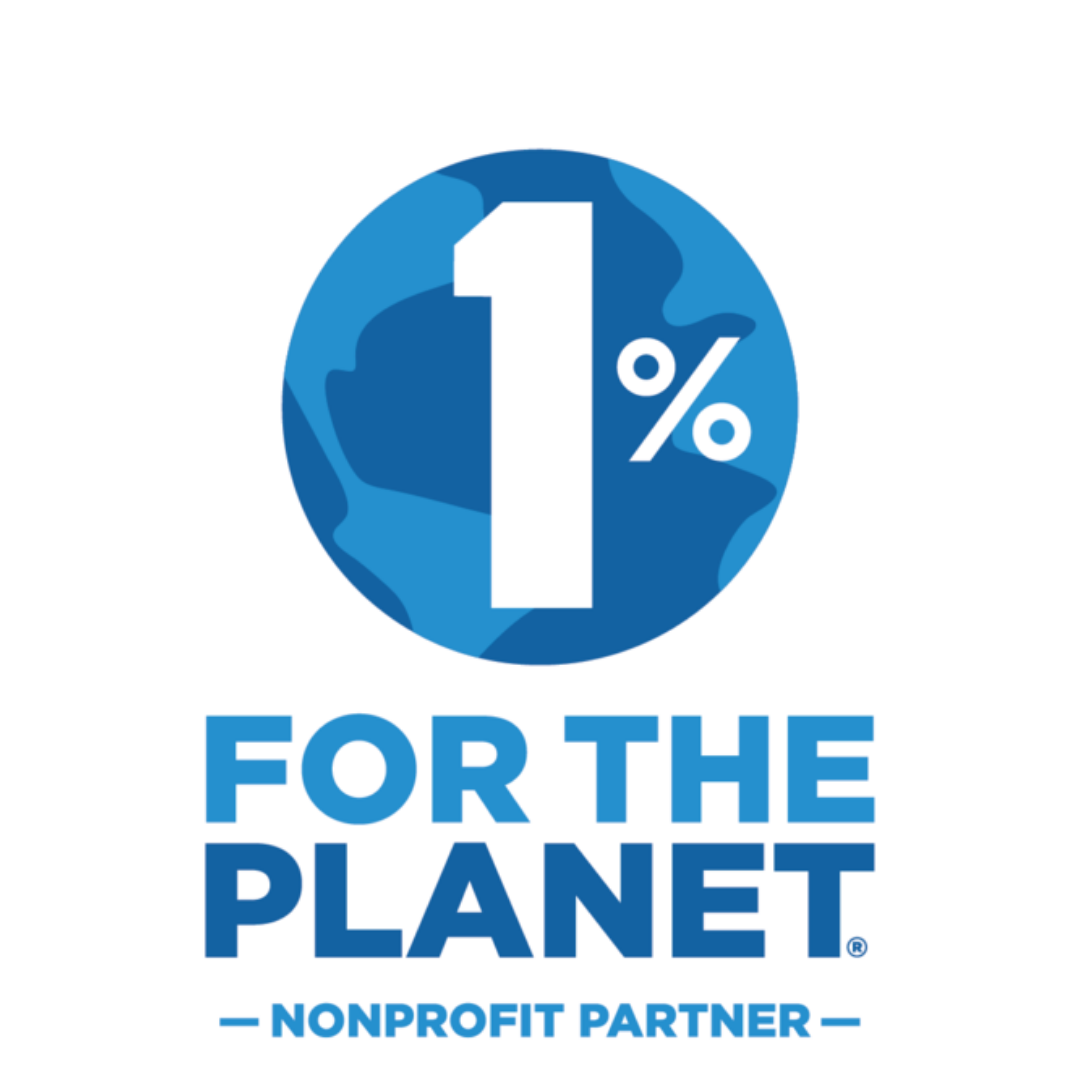“What should the Duwamish River be like in the future?” Celina Steiger, IslandWood’s Urban School…
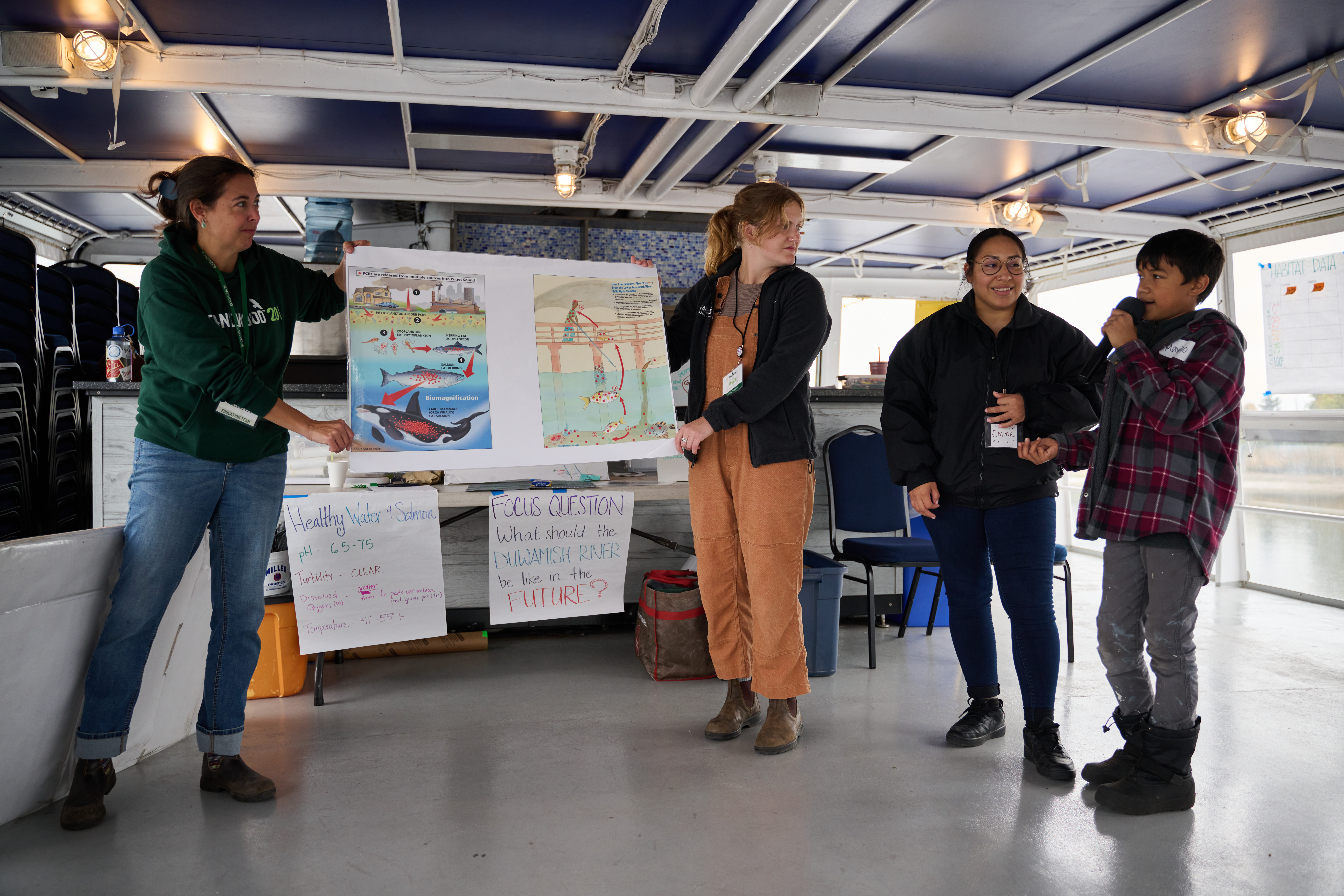
IslandWood instructors Celina and Grace holding a poster about toxins that harm salmon; Guest presenter Emma Maria, a Community Health Advocate from King county Public Health, is next to Grace; a student is sharing what he knows about pollution in the river and how it affects salmon and other animals.
This fall, we launched the Duwamish River Program. The program for 4th and 5th grade students explores how the Duwamish River has been impacted by people over many years and how local communities and groups have made improvements to the ecosystem.
For millennia, Coast Salish peoples lived in relationship with the Duwamish River – Seattle’s only river. Then, the city of Seattle was established and the River was straightened, industrialized and subsequently polluted, leading it to be named a Superfund Site by the Environmental Protection Agency in 2001.
Through this IslandWood program, students learn about this history, as well as more recent clean-up and restoration efforts involving the Duwamish Tribe, King County, Boeing, City of Seattle, the Duwamish River Community Coalition (DRCC), and many other dedicated individuals, government entities and community-based groups. Students learn about different perspectives of those connected to the Duwamish River (including salmon!) and explore their own role as caretakers and change-makers as they consider the future of the River.
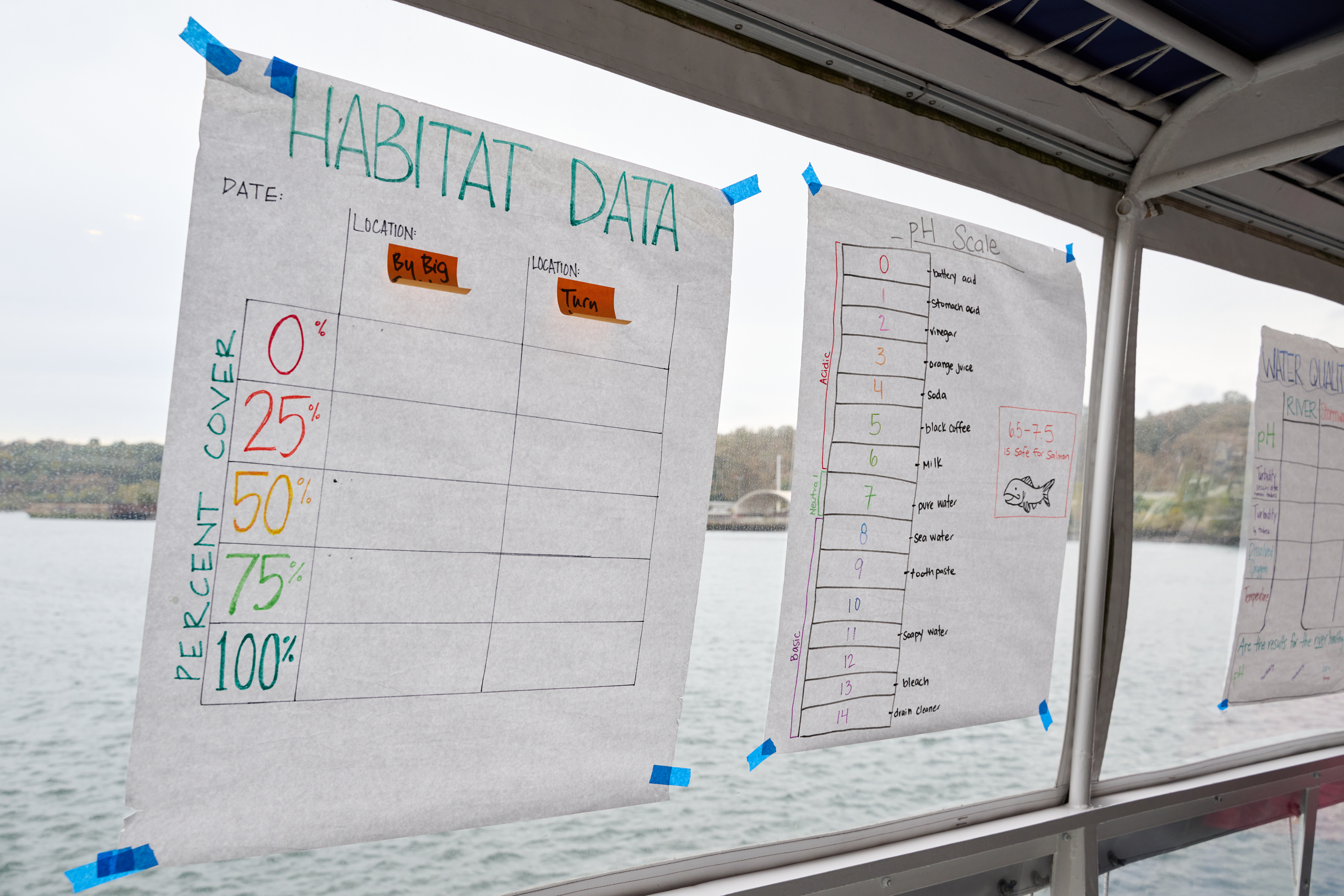
Students capture data about how much shoreline habitat they observed in two locations.
In this new IslandWood program, students learn about the history of the river and explore their role as stakeholders in what its future could look like. Learn more from our conversation with IslandWood Partnerships Manager, Celina Steiger, below.
What does the program involve?
We start by visiting students for a 1-hour lesson at school and then meet them at Harbor Island Marina for a 3-hour exploration of the Duwamish River by Argosy boat. On the boat, we pause at “story stops” that offer insights into different aspects of the river’s history and perspectives of people and animals connected to the River.
- During the first of these stops, viewing Kellogg Island and t̓uʔəlaltxʷ Village Park and Shoreline Habitat, students gain a deeper appreciation for how the Duwamish Tribe has stewarded the river.
- At the Boeing plant and a nearby metal recycling facility, they learn about the impacts of industrialization. They see several places where there has been recent ecosystem restoration and planting projects to support a healthy river, community, and wildlife.
- At Hamm Creek, we talk about how the area had become clogged with trash and ivy until local activist John Beal took action and inspired others to join the effort, allowing the creek to become a site where salmon are able to spawn once again.
- Along the way, we work to help students see firsthand that while addressing environmental issues isn’t easy, it is possible and absolutely critical – even at one of the most polluted sites in the U.S.
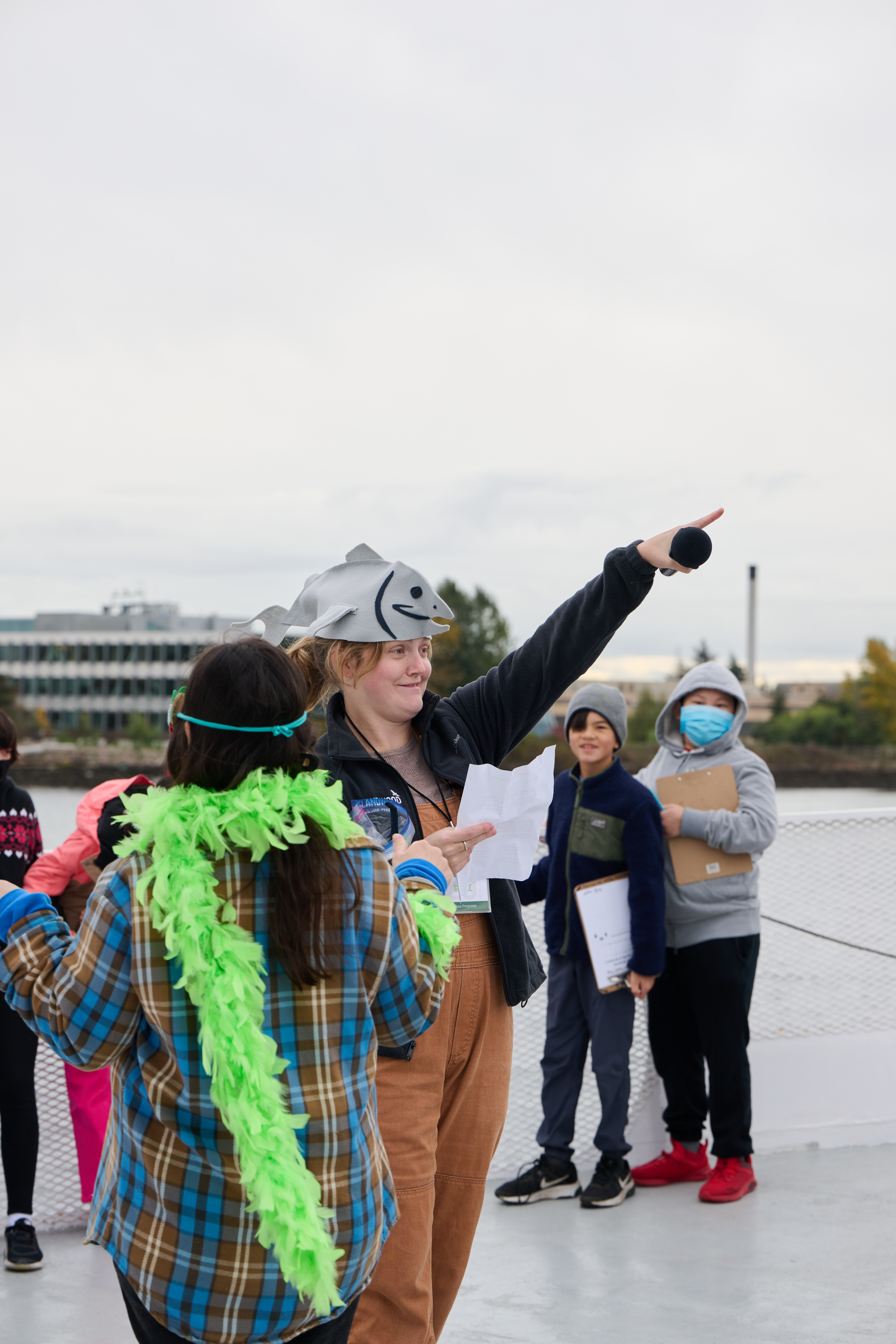
Grace and IslandWood instructor Kellan doing a short skit depicting a salmon and a hummingbird having a conversation about how nice it is to have habitat at Kellogg Island and Herrings House Park.
We piloted this program in 2019 and then it was put on hold due to the pandemic. Why was this new program created and how is it different from other IslandWood programs?
There are a bunch of reasons the program was created and ways it’s different from other programs of ours.
- The program is truly interdisciplinary in nature – integrating both social studies and science. The ultimate goal is to build on students’ existing relationship with the river and their community using both lenses, and interweaving – environmental and cultural issues. To meet this goal, we drew on You Decide, a civics assessment tool developed by the Office for the Superintendent of Public Instruction (OSPI) and used in Seattle Public Schools. This tool helps students strengthen their knowledge of public issues, learn about different stakeholder perspectives, and advocate for individual and collective action.
- We wanted to put energy and resources into addressing and teaching about environmental justice issues with students. The Duwamish River flows past communities that are disproportionately impacted by air and water pollution, as well as changes in the River resulting from climate change.
- It’s also different in that there was and continues to be, a significant amount of collaboration and work amongst different organizations to bring this program to life.
- The program is unique in that we invite scientists from Seattle Public Utilities and other community guest presenters on board the boat to share stories about their work or connections to the Duwamish River and engage with students directly. We’ve had guest presenters from King County Public Health’s Community Health Advocates, and observers from Seattle Public Utilities, Seattle Public Schools’ Social Studies department, and Duwamish River Community Coalition (DRCC).
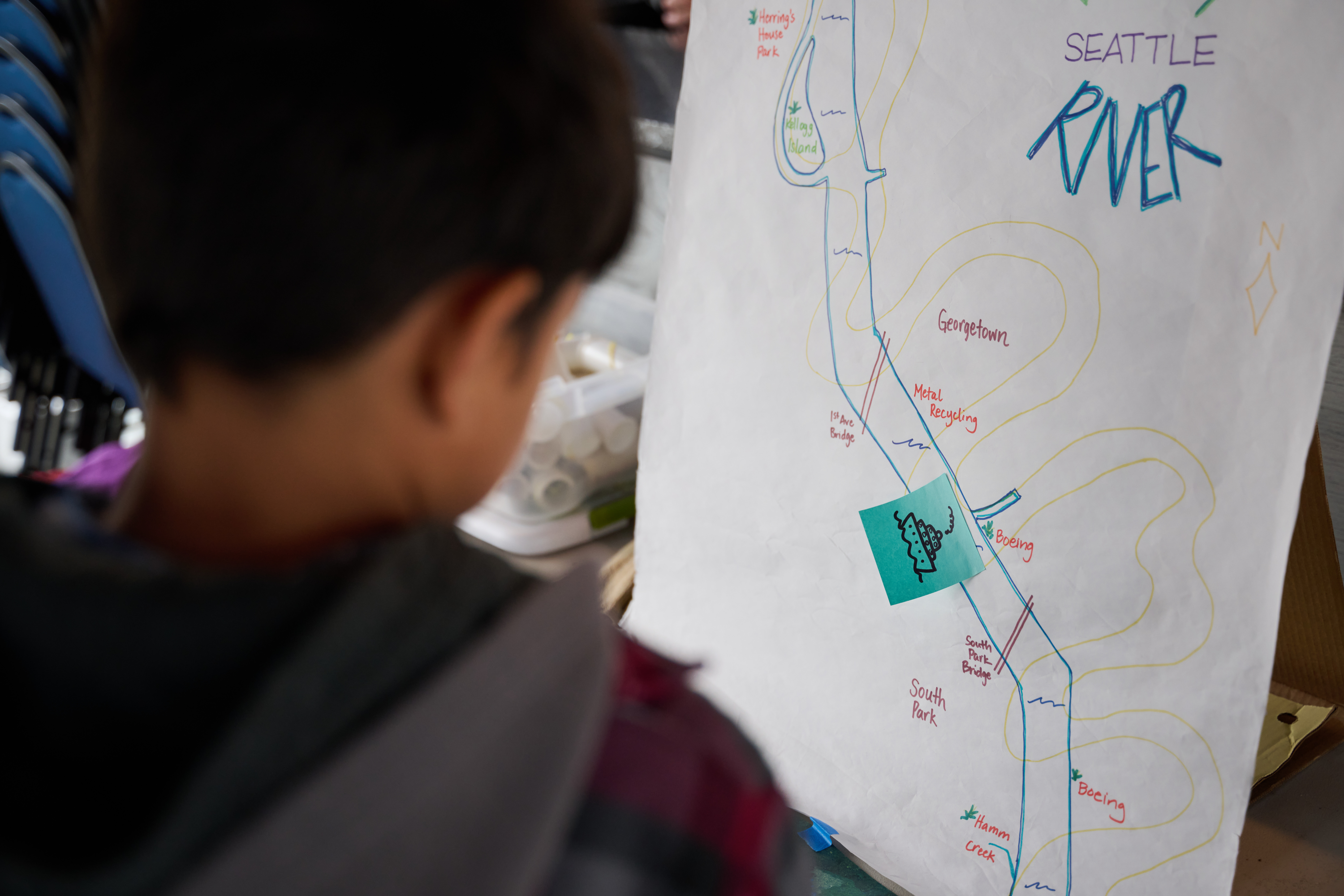
Student looking at map poster that we use to track where they are along the river. The orange writing are stops we made to tell a story and/or make observations. The yellow lines are the historic outline of the river.
Speaking of collaboration, what organizations have joined in this work?
Seattle Public Utilities (SPU) funds the program, which means that we can offer it to participating schools for free, including transportation to and from the river! Getting the pilot program up and running took months of careful planning with Seattle Public Utilities, Seattle Public Schools, and in consultation with the Duwamish River Community Coalition. And as I shared above, these community partners continue to engage with the program now, adding different perspectives, invaluable insights, and expertise to the experience for students.
Why was it so important to make sure the program was community-connected?
Connecting students’ classroom learning to real-world phenomena in their own communities helps make scientific and sociological concepts tangible and engaging. It makes them real. It also allows students to strengthen and apply their knowledge through firsthand experience and reinforces the fact that “the environment” doesn’t just refer to forests or mountain ranges – it can be as close as the river running through your own neighborhood.
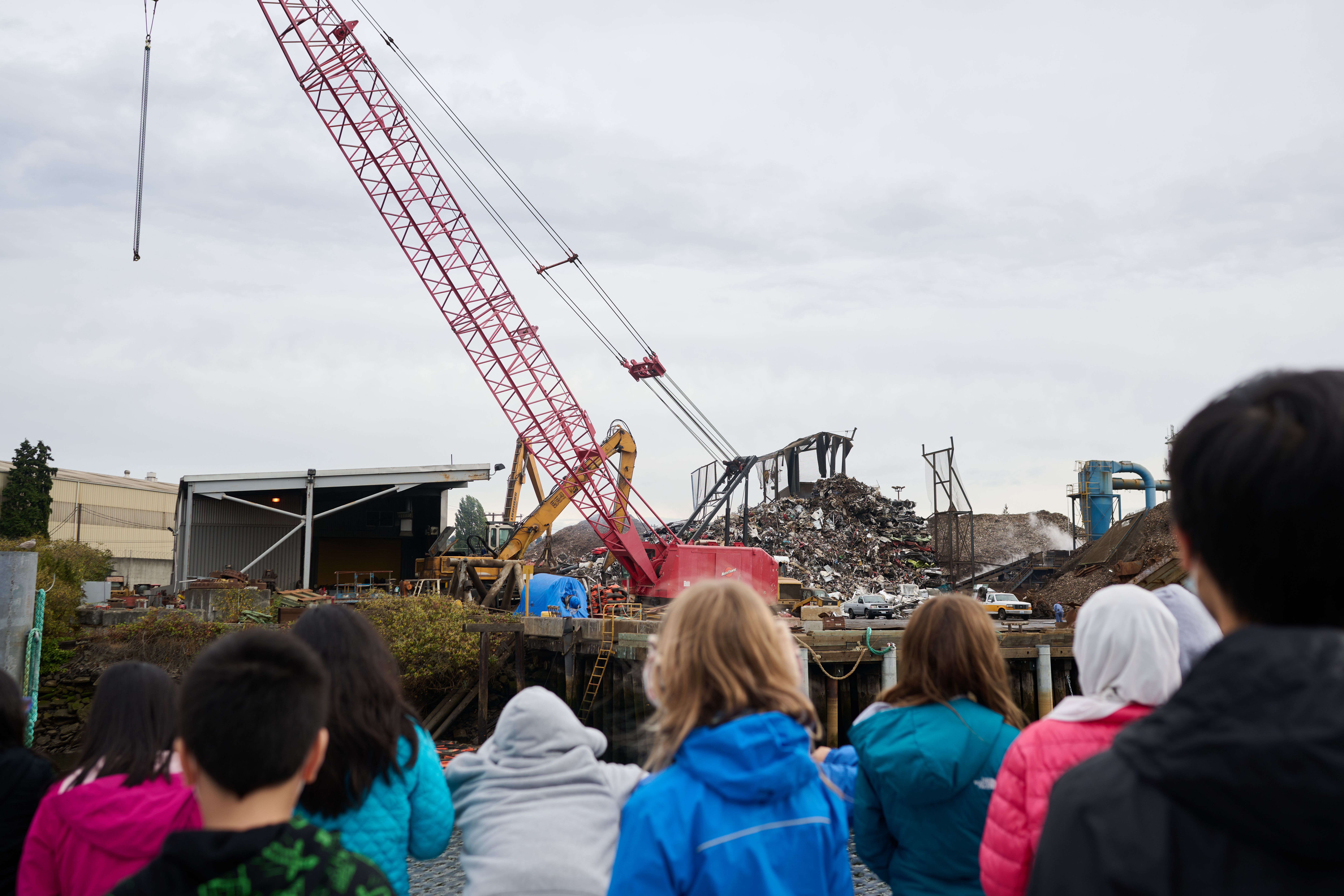
Students looking at the Seattle Iron and Metals Corporation facility that has allowed polluted runoff to flow into the River.
This program is only open to schools located in the Duwamish River Valley. Can you share a bit about why?
Schools and communities in the Duwamish Valley have been, and continue to be, underserved and marginalized, and commonly experience environmental racism and injustice. If we wanted to offer a program that focused solely on the Duwamish River, and explored environmental justice issues in the area, we wanted to prioritize the students that lived closest and were most connected to the Duwamish River. We have found that some students do know some about the Duwamish River (most commonly, that there are salmon there, that it’s the same name as the Duwamish tribe, and that it’s polluted), and may have connections to businesses or other places, but for the most part, students have never been ON the river, or learned about the wildlife, businesses, and issues affecting the river, as well as the success stories that have come out of community action.
What are teachers saying about the program?
One teacher shared with me, “It was so wonderful to see learning come alive for my kids in such an active and engaging way. This is how education should be… hands-on and out in our community! I’ll be able to make connections to this in the classroom for the rest of the year. Thank you for making such a powerful learning experience for our kids. It takes a village! Go Duwamish River!”
What is the one takeaway you’d want students to leave the experience with?
I hope students take with them that people have done significant work to improve the Duwamish River, and that they can be a part of the ongoing effort to help. I hope they can better understand that it was damaged from pollution but that people – including youth, businesses and government – have been taking action to improve the health of the river and the nearby communities. And also, that “the environment” is all around them – in the neighborhoods, streets, and waterways they see every day.
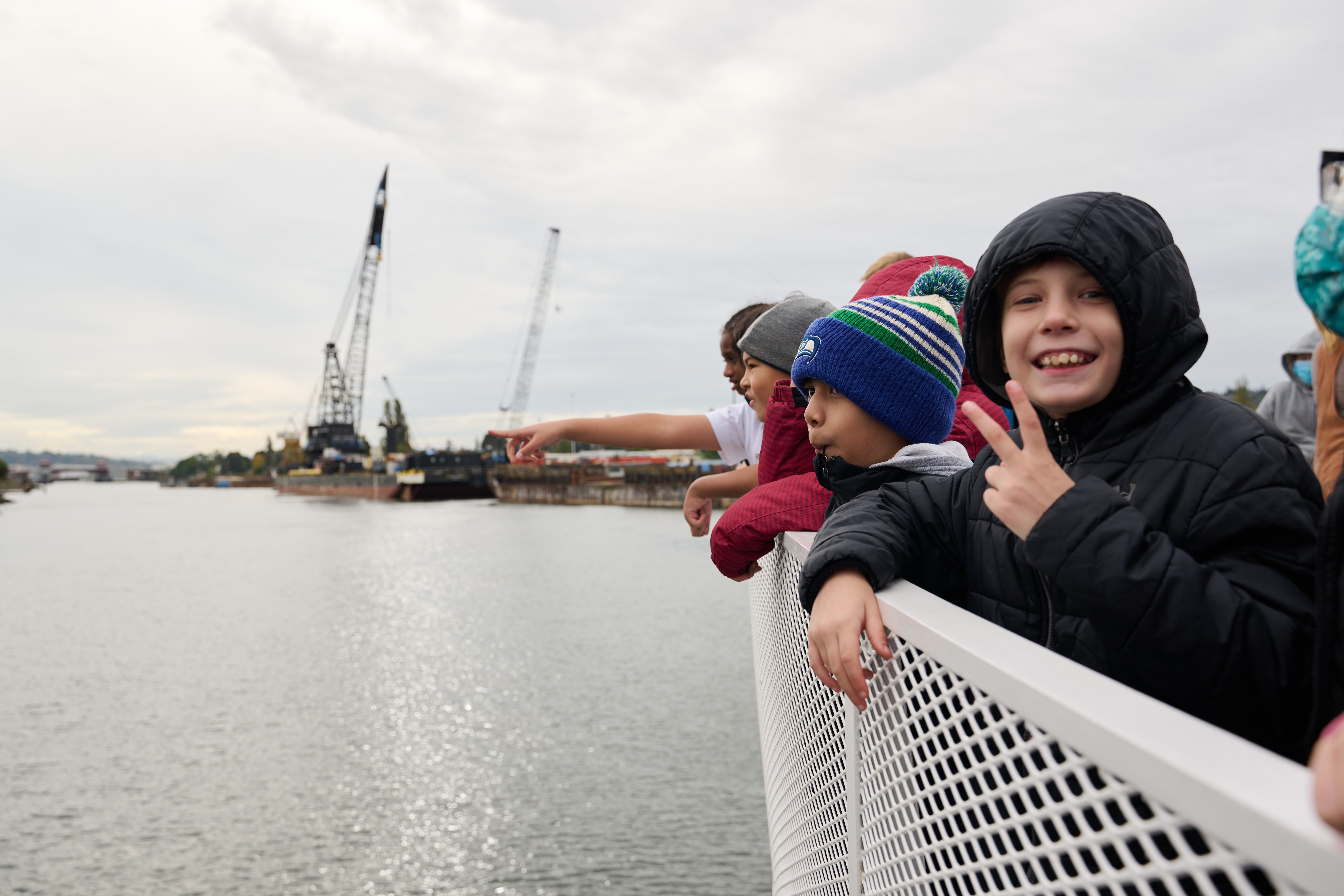
The history of the Duwamish River – and specifically the restoration efforts led by community organizations – are a testament to what can be done when we work together for our communities and the planet!
If you haven’t already, subscribe to our newsletter to stay in the know about IslandWood news and updates, stories from our programs, and more.

